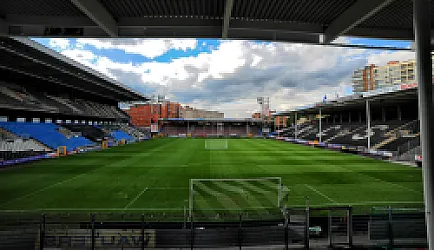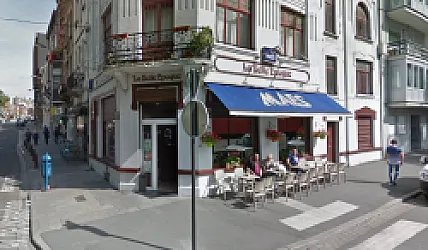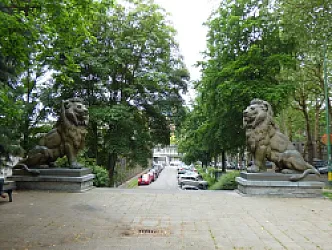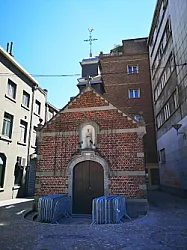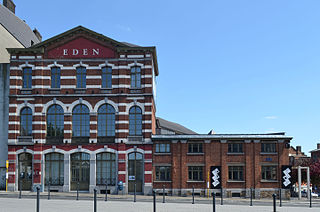Visit Charleroi in 2 days
12 must-see POIs, optimized routes and anecdotes.
Loading map...
You will visit the most beautiful points of interest in Charleroi
2 Days in Charleroi — A Gritty, Golden Weekend That Surprises
Charleroi stole my heart the moment I wandered off the beaten path. The city wears its industrial past like a bruise and a badge, a proud lesson in reinvention. Known as the “Black Country,” Charleroi can seem rough at first. Some say it’s overrated or even gloomy, but my visit proved otherwise. I found warmth, bold street art, and evenings that buzzed with unexpected life. This was my honest awakening to a place that refuses to be one-dimensional.
Why visit? Because Charleroi is not a postcard city. It’s a layered, human place where factories meet theaters and food trucks sit beside grand churches. The soundscape mixes tram clacks, church bells, and distant chants from Stade du Pays de Charleroi on match day. You’ll taste strong coffee and local beer, see striking murals, and feel the stone cool inside St. Fiacre Church. Highlights like Eden, Passage de la Bourse, and the sculptural surprises around Caporal Trésignies Barracks give you real contrasts. If you wonder what to see in Charleroi, expect authenticity, grit, and quiet beauty hidden in plain sight.
Planning can feel overwhelming. Charleroi keeps popping up with new galleries and secret courtyards. You could easily spend weeks exploring. I get the pressure of short trips. That’s exactly why this guide helps. Below you’ll find a focused Charleroi itinerary for a compact adventure. It’s tailored for a first time in Charleroi visit who wants to taste the city’s soul without burning out. I’ll show you how to see the best parts in a memorable, manageable way.
Key tip: Pace yourself and mix indoor and outdoor stops. Charleroi’s contrasts reward slow discovery. Take time inside Eden or St. Fiacre Church, then wander an urban block to reset. This keeps energy up and lets you notice small details. Wear comfortable shoes and keep your camera ready. Now let’s dive into the itinerary and make the most of these two intoxicating days.

Quick Mini Guide to Charleroi
Where to stay:
- Centre-ville / Gare Sud — easy access to Passage de la Bourse, cafés and trains.
- Near Place Charles II (Rive Gauche) — modern shopping and short walks to Eden and murals.
- Book hotels with secure bike storage if you plan to photograph industrial sites along the Sambre.
When to visit:
- Spring–early autumn for outdoor street-art walks and riverfront light; match a matchday at Stade du Pays de Charleroi for atmosphere.
- Weekdays are quieter for museums and the Caporal Trésignies Barracks; weekends best for nightlife and interactive tours.
Things to do:
- Morning: Eden cultural hub and local exhibitions — check opening times.
- Walk Passage de la Bourse and the mural trail — great for industrial-era photography.
- Visit St. Fiacre Church for its local parish feel and architecture away from tourist crowds.
- Tour Caporal Trésignies Barracks to glimpse military/local history; finish with a stadium visit at Stade du Pays de Charleroi.
- Book an interactive city game: The Alchemist CHARLEROI or The Trophy of the Tribes CHARLEROI — immersive, team-based city tours (reserve ahead).
Don't forget:
- Cash and local bus/TEC app for short hops; many spots are walkable but spread out.
- Wear good walking shoes for cobbles and industrial sites; bring a camera for gritty photogenic scenes.
- Respect working sites and private property when exploring former industrial zones.
Day 1 - Charleroi
5 POIs to discoverDay 1 - Morning à Charleroi
5 Points of interest - Duration : 3h45 - Distance : 2.9 km - Walking : 0h39
Caporal Trésignies Barracks
- Trésignies barracks is a former military facility in Charleroi built in 1887 to house the military troops of the 13th regiment of line and the 1st regiment of Hunters on foot.
- The building is a vast brick quadrangle with a neo-medieval entrance.
- Enlarged in 1938-1939 with a modernist complex.
- Today it houses the Chasseurs à pied Museum, the Open University and spaces for entrepreneurship.

Quai 10
- Quai 10, located in Charleroi and opened in January 2017, is a cultural space that brings together a cinema, a video game space and a brasserie, and is also called Centre de l'image animée et interactive.
- Quai 10 consists of five movie theaters, one of them in Cinéma Le Parc.
- Quai 10's play area is open to all and aims to educate and entertain by enhancing understanding and creativity related to video games, for young and old alike.
- A brasserie is present on the Sambre docks.
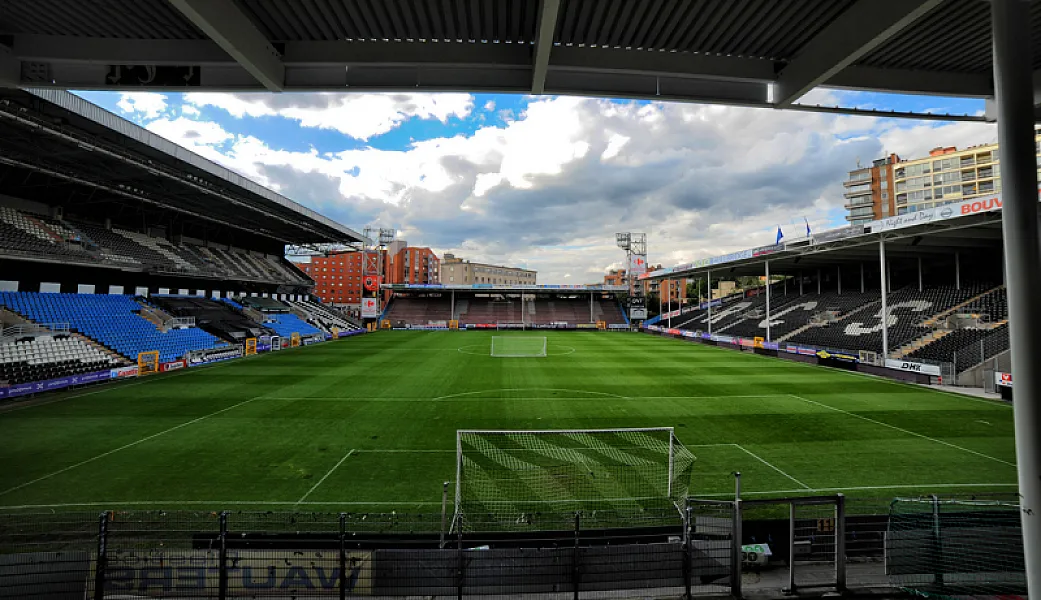
Stade du Pays de Charleroi
- Pays de Charleroi Stadium is a sports venue located in Charleroi, Belgium.
- It is the main sports facility of the city of Charleroi and has been used by the Royal Charleroi Sporting Club soccer club since its inauguration in 1939.
- After 21 years, the club returned to Europe by participating in the Europa League following the 2014-2015 season.
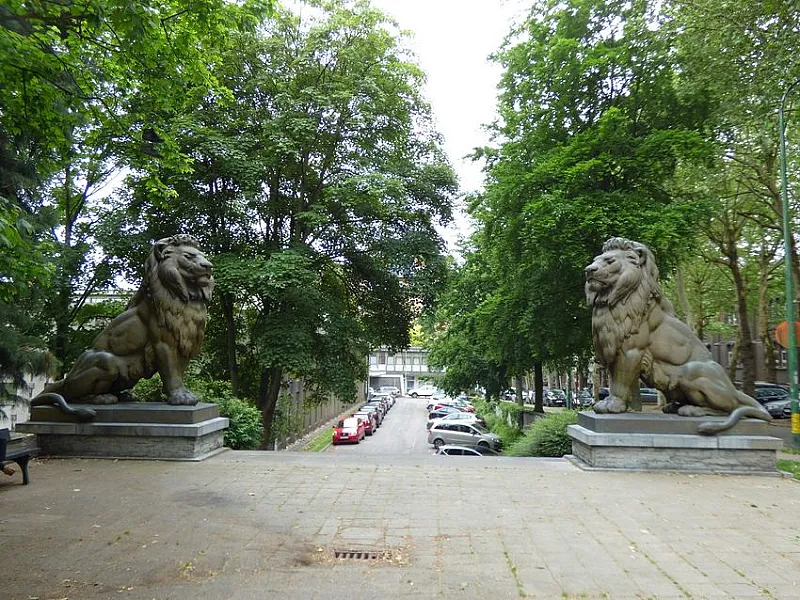
Totor et Tutur
- In the 19th century, the Palace of Justice of Charleroi was moved.
- The new Palace was built between 1877 and 1878, and in front of the entrance two sculptures of lions symbolizing Justice were placed in 1879.
- In the late 1960s, the lions popularly nicknamed Totor and Tutur were moved to the boulevard Defontaine.
- Their names are said to have come from the names of the two sons of the janitor of the Palais de Justice, Nestor and Arthur, commonly nicknamed at the Palais, Totor and Tutur.
- It was the journalist Louis Bufquin des Essarts who popularized the lions, making them chatter about local political events and gossip.
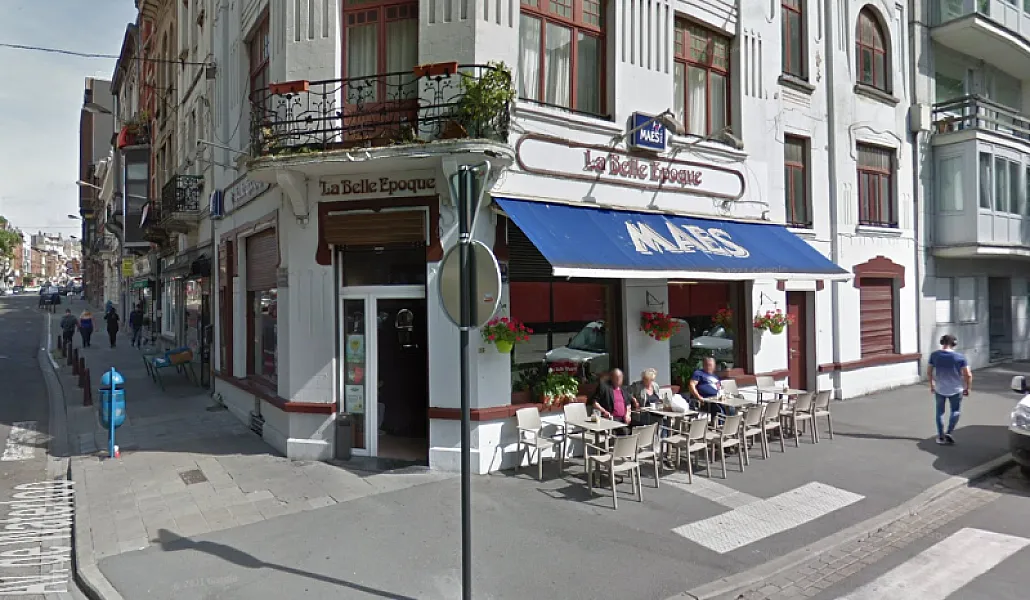
La Belle Epoque
Day 2 - Charleroi
7 POIs to discoverDay 2 - Morning à Charleroi
5 Points of interest - Duration : 3h45 - Distance : 1.6 km - Walking : 0h20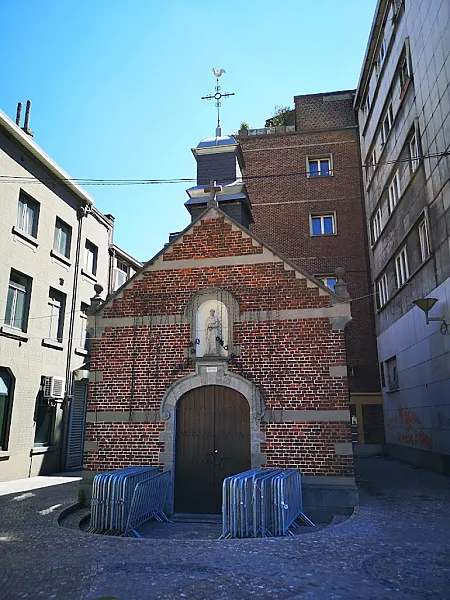
St. Fiacre Church
- After the capture of Charleroi by the troops of Louis XIV in 1667, a U-shaped military hospital with a chapel dedicated to Saint-Fiacre was built near the Sambre.
- Over time, the hospital buildings changed function, but the chapel persisted.
- The history of the chapel then had many ups and downs....
- With the French Revolution, the chapel was demolished.
- It was rebuilt a century later, and demolished again in the late 19th century.
- The current chapel, from the 1980s, is very much inspired by the second chapel, with a classical appearance, a bell tower, an altar and an altarpiece from the former Capuchin convent.

Passage de la Bourse
- Passage de la Bourse is a covered gallery.
- It was built in the late 19th century.
- The exterior buildings are in the Flemish neo-Renaissance style, while the interior facades are in the neoclassical style.
- The interior facades feature three neoclassical registers: Doric, Ionic and Corinthian.
- The Passage de la Bourse was restored in 2003, giving it back its architectural brilliance.
- Over the years, the gallery has become a popular venue for arts, music and entertainment.

Charleroi City Hall
- The town hall is an eclectic building combining classicism and art deco.
- It was inaugurated in 1936.
- The bell tower, built in blue stone, white stone and brick, is 70 meters high and has a carillon with forty-seven bells.
- Many artists contributed to the decoration of the complex, including Alphonse Darville and Georges Wasterlain.
- Prior to the town hall, a cavalry barracks occupied the site in the fortress built in 1667.

Hôtel des Postes
- Built between 1907 and 1911 to house the Charleroi Central Post Office, the building is an important architectural landmark of the city.
- The architecture features an eclectic late 19th-century aesthetic mixed with the needs of the expanding telecommunications networks.
- The building's 45-meter-high tower was used to disperse telegraph wires and housed the region's first telephone exchange.
- The Flemish neo-Renaissance style is reflected in the architectural details, with elements reminiscent of other buildings of the period.
- After various uses, the building was restored to house the Molière bookshop in 1996.

Protestant temple
- The Protestant Temple or Protestant Church of Charleroi is a Protestant religious building.
- The temple was inaugurated in 1880.
- It occupies the site of the former fortifications of the city.
- The interior of the church is sober and focused on the preaching of the minister, reflecting Protestant values.
- Protestant architectural principles are reflected in the absence of altars, candles, crosses or icons in the church.
Day 2 - Afternoon à Charleroi
2 Points of interest - Duration : 1h30 - Distance : 0.2 km - Walking : 0h03
Eden
- Eden was originally a recreational complex built by architect Auguste Cador in the last quarter of the 19th century.
- The main building is erected in brick and limestone, with a three-story façade and five bays of arches under a triangular pediment.
- In addition to being a performance venue, Eden also houses the Charleroi Academy, a cultural center.
Belfry of Charleroi
- Charleroi City Hall, built in the 1920s-1930s, became a symbol of the region's economic and industrial growth in the 19th century, transforming the city into a thriving center.
- Charleroi's bell tower is an emblem of communal freedoms and a symbol of the cities power.
- The bell tower is a remarkable Art-Deco building.
- It is a tower 70 meters high and weighing 4,000 tons, crowned in bronze, with a carillon of 47 bells.
- It is built of blue stone, white stone and special bricks.
Where to Stay in Charleroi
Location matters in Charleroi because the city is compact but varied: a short walk or tram ride can take you from the dense, working-class streets of the centre to industrial heritage sites and a large stadium in Marcinelle. For a two-day visit you want to minimize transit time so you can soak up the sights—Eden, Passage de la Bourse and St. Fiacre Church sit comfortably within the central area, while the Stade du Pays de Charleroi and some military heritage like the Caporal Trésignies Barracks lie a little farther out. Choosing your base with that geography in mind makes your trip calmer and more efficient.
Charleroi’s heart is often described in local terms as Ville-Basse (the lower town) around the train station and commerce areas, and Ville-Haute (the upper town) with its more residential slopes. For two days, most visitors find Ville-Basse the most practical base: you’re within easy walking distance of Passage de la Bourse and the lively streets near Eden, and public transport links radiate from here. If you expect to attend a match or want a quieter, greener setting, Marcinelle is practical for evening return trips to the stadium and industrial sites but slightly farther from the compact centre.
Practical transport tips help you decide. The city is served by the Charleroi metro/premetro and a dense TEC/Metro bus network; the main rail hub at Charleroi-Sud gives fast regional connections and airport shuttles to Brussels South Charleroi Airport. For a short stay prioritize a place within a 10–20 minute walk of Charleroi-Sud or the main tram stops so you spend your time exploring rather than changing lines.
Neighborhood choice should hinge on what matters most to you: maximum walkability to central sights and cafés, or proximity to the stadium and quieter streets. If you’re undecided, a central location near Passage de la Bourse gives the best balance—you can reach Eden, St. Fiacre Church and the barracks area quickly and still hop a tram to Marcinelle for the stadium.
Finally, relax about safety and comfort: pick accommodations with clear reviews mentioning easy check-in, luggage storage and nearby public transport, and aim for places on well-lit streets. A small compromise on room size for a great location will repay you with more time to enjoy Charleroi’s distinctive mix of heritage and contemporary life.
Getting Around Charleroi
Charleroi is surprisingly easy to explore once you get the hang of it: the city is served by the regional TEC network of metro (light rail) and bus lines that connect the main sights, neighborhoods and the big station at Charleroi-Sud. Routes are compact, stops are frequent, and many drivers and fellow passengers are used to helping visitors — so even if your French is limited, you’ll find the system friendly and straightforward. I always enjoy the small adventure of hopping on a tram and watching the city unfold outside the window 🚇.
A practical tip: always buy and validate your ticket before you travel. You can get single tickets and day options from machines at major stops, some kiosks, or via the official app and website. If you prefer plastic cards, look into the regional smartcard options, but for most short visits a paper or mobile ticket is easiest. Conductors will check occasionally, so keeping your validated ticket handy saves you stress.
Use Google Maps as your transit companion — it reliably shows TEC lines, timetables and walking directions between stops and attractions. Enter your destination (Eden, St. Fiacre Church, or Caporal Trésignies Barracks) and the app will give you step-by-step options with estimated travel times and transfer points. I’ll also glance at a station map when I arrive so I know which platform to aim for; a quick look at the stops prevents wasted circles around big squares 🗺️.
If you plan multiple trips in a day, consider a day pass or a multi-ride bundle: single fares typically fall in the low euro range (around €2–€3), so a day ticket often pays off if you’re hopping between sites. Walking short stretches between nearby stops is free and scenic, and regional trains can save time for longer hops outside the city. Combining on-foot wandering with targeted rides is the best way to stretch your budget and discover hidden corners.
On my last visit we wanted to see Eden and then head to St. Fiacre Church before checking out the Caporal Trésignies Barracks. We bought a day ticket, validated it, and took a short bus that dropped us within a five-minute walk of St. Fiacre — the driver even pointed out the right stop when I asked. From there it was a pleasant walk to the barracks area, and the rest of the afternoon was a mix of trams and strolling. If you stay relaxed and validate your ticket, navigation in Charleroi becomes part of the fun rather than a chore 🎫.
What to Pack for Charleroi
Charleroi is a gritty, fascinating city of industrial heritage, sculptures tucked into alleyways, lively bars and small theatres — perfect for a short, intense two-day visit. I like to travel light but prepared: on my last quick trip I was out for 10+ hours both days, walked nearly 15 miles in total, and learned which few items made everything smoother. Below are the essentials that kept me comfortable, safe and ready for impromptu discoveries.
1. Comfortable walking shoes (required): I always bring a pair I’ve already broken in — for example, Merrell Moab 2 or Adidas Ultraboost. In Charleroi you’ll be on mixed pavements, steep streets and some gritty industrial areas; on my first afternoon I walked 12 km (about 7.5 miles) and my blisters-free feet were the reason I could stay out exploring until midnight. Good cushioning and a sticky sole mean you won’t bail early because your feet hurt.
2. Cross-body bag (anti-theft): I use a small zip-close cross-body with an interior pocket and a slash-resistant strap. In busy bars and around transit hubs it’s invaluable — once I felt a hand at a tram stop and my zipped bag protected my wallet. It keeps your hands free for photos, a beer, or a theatre programme, and the zip prevents easy access from pickpockets.
3. Weather-appropriate clothing for Charleroi: Layers are your friend. Even in summer I pack a light sweater and a packable rain jacket. On one rainy afternoon a sudden mist turned the industrial landscape atmospheric but wet — the jacket let me keep going without hunting down a café. Think comfortable trousers, a breathable top, and one smart layer for an evening theatre or nicer restaurant.
4. Power adapter (Belgium Type E) and phone essentials: Belgium uses Type E plugs at 230V — bring a reliable adapter so your phone and camera can stay charged. I once arrived without one and spent the first hour hunting a shop; it cost me a missed theatre curtain call. An adapter gets you power in your hotel and in cafés where you might recharge between stops.
5. Power bank (10,000–20,000 mAh): I carry a 10,000 mAh pack that gives me a full phone top-up and a bit extra for a camera. When I was mapping street art and using mobile tickets for a theatre, my battery drained fast — the power bank kept me connected for directions, translations and photos the whole day.
6. Compact umbrella (optional but recommended): Charleroi’s weather can flip to drizzle unexpectedly, so a small foldable umbrella saved me on two trips. It takes almost no room and keeps your camera and notes dry — optional, but I wouldn’t skip it for an autumn or spring visit.
Enjoy Your Trip to Charleroi!
In just two days you’ll visit eight thoughtfully selected spots across Charleroi, packed with culture, history and lively urban energy. From the atmospheric Eden theatre to the peaceful St. Fiacre Church and the striking Caporal Trésignies Barracks, this plan gives you everything you need to sample local food, bars, sculptures and memorable architecture.
Keep in mind this is a GUIDE, not a rigid timetable — let the city breathe around your plans. Make space to leave room for the unexpected: getting pleasantly lost in back streets, stopping at a random café, or lingering in a small museum can become the trip’s brightest moments. Don’t feel like you must see EVERYTHING; the magic often comes from unplanned discoveries.
I hope you feel ready and curious — I’m excited for you! Embrace the theatres, the urban art, the historic corners and the friendly cafés. You’re going to love wandering Charleroi’s mix of industrial past and creative present and creating unforgettable memories with every turn.
Want to explore in a playful way? Try Coddy’s gamified tours: The Alchemist CHARLEROI and The Trophy of the Tribes CHARLEROI are fun, interactive ways to learn the city’s stories while solving challenges — a great option for solo explorers or groups.
Share your discoveries or ask questions if you want tips — I’d love to hear about your adventure. Safe travels! Have fun! Enjoy!
Want more adventure?
Discover our urban escape games to transform your visit into an interactive adventure!











